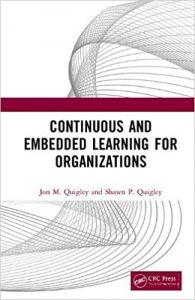Covid and Asynchronous Communication
Shared Covid and Asynchronous Communication
Jon M Quigley
Communication
If you are an engineer or computer science person, you may know about asynchronous communication from the technical perspective, but we provide brief definition below.
Technical definition
Asynchronous communication is the transmission of data, generally without the use of an external clock signal, where data can be transmitted intermittently rather than in a steady stream.[1]
From a team communications perspective, we are really talking about the definition below. Working from home and actually the notion of a work life balance in general, will likely result in times when our team is communicating asynchronously.
Team definition
Simply put, asynchronous communication is when you send a message without expecting an immediate response. For example, you send an email. I open and respond to the email several hours late[2]
History
People have likely have experience in working from home or working with teams distributed across the world long before Covid. Team members distributed across many time zones will, by necessity, result in asynchronous communication. Well, either that or we adopt the time zone of our colleagues in Norway when we work in the Midwest of the United States, or vice versa.
Imagine getting up for work at midnight so we would all be on the same work schedule and therefore more interactions and perhaps we could expect a quicker response. If you work in teams across the globe, you likely had been employing asynchronous communications. A difference of 12-hours across many time zones, and competing demands on us have made this practical long before the pandemic.
Other Factors
Asynchronous communication is only part of this revolution. This coupled with cloud file sharing and interconnectivity in general are both big boons for working remotely. Team members are able to update documents and contribute their respective input, at a time and place they deem best. Numerous virtual meeting platforms make sharing and reviewing documents easy, allowing for virtual reviews for those times where we must synch up, because there are a couple of downsides to asynchronous communication.
The Downside
Speed
Some objectives and work effort require actions more than more a response to emails sent or iterations of documents. For example, consider the response to some latent event, perhaps one that only some of our team members are aware. For those types of events, waiting for others feedback, delay the response to this risk event. We need to respond quickly as possible to an emerging event to limit the severity of the damage. This is an example of when it is time to consider an approach other than asynchronous communication for resolution. We need to develop and invoke a response quickly to reduce the impact of the emerging event.
Emails, Not Communicating
You should not assume that written material is interpreted by the recipient exactly or with great fidelity to the intention. In fact, this holds for oral communication as well. People have different models for what specific words or phrases mean based upon experiences. Work toward a common lexicon or model of ideas and ways of working. In this way some of what we write or say will be not reduced speculation in interpretation, as the words used are based upon common mental models and definitions.
Having some agreed upon and well understood definitions smooths the interpretation, ensuring what is produced matches the expectations. This is especially true and necessary when there is little or no feedback to help clarify. To get past this, as a manger of a newly built test and verification group, we took training and obtained the certification on the topic of testing, the entire team, in two or three batches. The goal was not to obtain the certification, though that was well and good. The objective was to provide a common platform or mental models and language from which we could build our own relevant models and language. This provided a base, a synchronizing point if you would, for communication that provided us with solid terra terra-firma which we could extend.
Conclusion
It is important to recognize that not all situations and circumstances can benefit from asynchronous communication. Additionally, think beyond the communication, for example, this form of communication does little to nothing to help develop the work environment or facilitate team development. The disconnection facilitated by asynchronous communication from the other individuals in this group, impedes team and idea development.
One should not consider a single approach to communication. Success requires a mix of asynchronous communication with synchronous on a regular schedule. Team members that talk to each other are able clarify, establish specific context and focus on the topic at hand. Details are easily lost in purely asynchronous communication. It is not possible to create a team out of a disparate group of people solely through asynchronous communication. To create a team requires more than email exchanges. A true team is not likely to happen (I would say never but I do not like the words never and always) at the distance that comes with asynchronous communication.
Do not delude yourself, that asynchronous communication is a grand solution to organization communication difficulties. True communication requires much more.
[1] https://www.friday.app/p/asynchronous-communication last accessed 12/19/20
[2] https://blog.doist.com/asynchronous-communication/ last accessed 12/19/20


